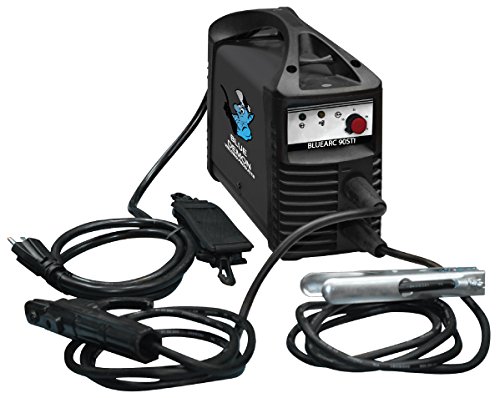The TIG in TIG welding stands for Tungsten Inert Gas, which is where the welder uses a tungsten electrode to protect the weld pool. Created in the 1940s by a welder named Russell Meredith because he felt the current methods were inadequate, the technique became highly popular and has played a significant role in high-quality welding and the use of aluminum. In this article, we’ll answer the question “Is AC or DC TIG welding better” by going through some of the pros and cons below.
What Is TIG Welding?
TIG welding uses a tungsten electrode to create an arc to create a weld. It also requires using an inert shielding gas to prevent a reaction from the air around it. The shielding gas in TIG welding is usually pure argon or argon mixed with helium. The mixture of helium and argon minimizes gas entrapment and leads to lower porosity levels once the weld is complete. The use of a helium and argon mix also increases the arc voltage by two or three volts.
Pros of AC TIG Welding
AC ad DC welding both have their pros and cons. Let’s take a look at the pros of the use of AC in TIG welding. Alternating current in TIG welding fixes arc blow issues that may occur when using direct current. Alternating current is also less expensive and more portable than direct current. AC welding works best on aluminum, heavy plates, and magnetized metals.
Image via Flickr by Gazman_AU
Cons of AC TIG Welding
Alternating current isn’t without its downsides. For example, since it has an alternating polarity, the weld strength is weaker and more prone to spatter. Another issue with the alternating polarity makes it so the arc can be hard to work with on a project.
Pros of DC TIG Welding
When working with direct current, you’re working with a single polarity, but it’s up to you to choose whether you want a positive or negative polarity. Because the direct current polarity doesn’t alternate, it’s stronger, providing a smoother weld with a stable arc. DC welding works best on stainless steel and provides better weld properties.
Cons of DC TIG Welding
Direct current has its downsides as well. Even though it produces a stable arc, it can cause an arc blow, which is an unwanted deflection of the arc during the welding process. Arc blow is caused by the distortion of the magnetic field produced by the electric current and leads to defects such as irregular welding beading. Another con of direct current in arc welding is that it’s more expensive, and the equipment is heavier.
Whether you work with AC or DC for your TIG welding, you will need the right equipment. No matter if you weld as a hobby or own a small business, it’s often cheaper to rent the equipment you need rather than buy what you need. Red-D-Arc Welderentals offers TIG welders and welding equipment that provide the welding performance and versatility you need to do the job right the first time.

